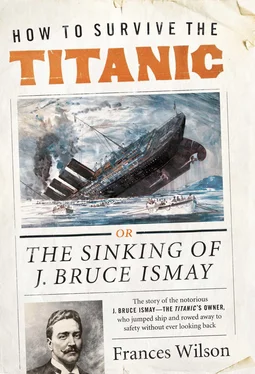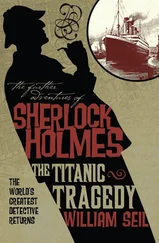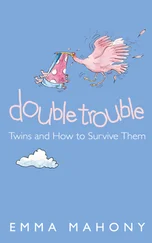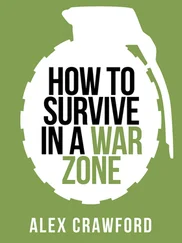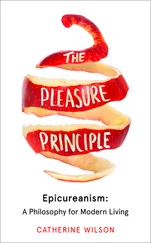Visitors to Elstree tended to be men, like John Galsworthy and Joseph Conrad, who had been picked up by one or other of the children on their various travels. Galsworthy and Conrad were initially friends with Ted, the eldest of the Sanderson offspring, before being embraced by the family as a whole. The unusual freedom of life at Elstree was made apparent to Agnes, one of Ted’s sisters, when she visited the Galsworthy family home with its ‘acres of red pile carpet’ and ‘thousand gold chair legs’. The ‘atmosphere of Victorian propriety’, Agnes remembered, ‘the dumb immaculate servants, the low flanneletty Galsworthian voices, killed all life in us’. 9But the Galsworthy home was Bohemian in comparison with the Ismay household.
Elstree was a family school in every sense. Ted Sanderson would succeed his father as headmaster in 1910, and he in turn would be succeeded by his own son. For Ted, ‘there was no other school in the land to compare with Elstree. Where else was there such a fine view, such a beautiful chapel, such a Classical tradition, such good manners, such a manly, Christian tone?’ 10Most people agreed. In 1887, it was voted by the Pall Mall Gazette the country’s best prep school for boys. In Sporting Pie, a memoir of his schooldays, F. B. Wilson writes that ‘in the year of 1890 there can have been no private school in the world that was quite on a par with Elstree, if only by reason of the wonderful selection of masters whom the Rev Lancelot Sanderson had got together’.
It was a school in which a homesick boy might be happy, but Ismay was miserable at Elstree. His reserved nature made him particularly unsuited to the community spirit of boarding and to the continual joshing and mocking and testing of a boy’s limits which went on from dawn to dusk. Even as a child, Ismay did not like the company of children; he was unpopular and lonely and separated from his adored mother, who had just given birth to her second set of twins. Raised in an authoritarian household, Ismay was uncomfortable around the domestic unruliness of the Sandersons. He liked his world ordered and controlled; as an adult, his visitors learned to arrive ten minutes earlier than their agreed time and wait until the clock struck the appointed hour before knocking on the door.
Ismay was a northerner in the south of England, a sea-gazer in a landlocked village. The only time he could return to the world of ships was in his school books, where he read about the HMS Birkenhead, the most famous shipwreck of the day, which had sunk off the Cape when his father was a teenager, carrying only enough lifeboats for the women and children. It was on board the Birkenhead that the ‘age-old’ law of women and children, known as the ‘Birkenhead drill’, was first used. Ismay learned how the band was reported to have played as the ship went down, how ‘the roll of the drum called the soldiers to arms on the upper deck’, how ‘they stood, as if on parade, no man showing restlessness or fear, though the ship was every moment going down, down’. 11He and schoolboys all over the country would recite Kipling’s lines, ‘stand and be still to the Birken’ead drill’.
Thomas Ismay sent Bruce to Elstree not because he valued its atmosphere of freedom, which he doubtless considered southern and soft, but because the school prepared its pupils for Harrow. Ismay, whose clear thinking was often remarked upon, passed the entrance exams in the autumn of 1876 and became a Harrovian in January 1877 when he had just turned fifteen. The rigour of life at Harrow might have suited a boy of Ismay’s temperament more than had the jumble of Elstree, but Ismay’s misery seems to have increased. Again, he was under the tutelage of a legendary headmaster who served for other boys as an inspiration. Dr Montagu Butler raised his pupils in the Arthurian tradition of gallantry, honour and courtliness. Harrovians were marinated in the language of chivalry; this was a time in which the Victorian public schools promoted ‘the knightly life once more’, as J. H. Skrine, Warden of Glenalmond College, scathingly put it, with the attendant ‘narrowness… pride of caste… soldier scorn of books and industry which is not of the open air, as war, the chase, the game’. English public schools were breeding a species of male so pointlessly romantic and impossibly arcane that they seemed, in the words of Second World War poet Keith Douglas, to be ‘unicorns, almost’.
Ismay was in Bushell’s House (as was Ted Sanderson, who went up to Harrow four years later) along with forty other boarders. He shared a room consisting of a table, two chairs, a washstand and two beds which folded into the wall during the day; he was expected to provide his own rugs, cups and cushions, either bringing them from home or buying them from other boys, and he soon learned that displaying pictures of your family was considered in bad taste. John Galsworthy, five years younger than Ismay, recalled his own time at Harrow — which had been a great success — as dominated by ‘all sorts of unwritten rules of suppression. You must turn up your trousers; must not go out with your umbrella rolled. Your hat must be worn tilted forward; you must not walk more than two abreast till you reached a certain form.’ You must ‘not be enthusiastic about anything, except such a supreme matter as a drive over the pavilion at cricket, or run the whole length of the ground at football. You must not talk about yourself or your home people; and for any punishment you must assume complete indifference.’ 12
In his first term Ismay fagged for an older boy, which involved filling his bath, lighting his fires, running his messages, carrying his footballs, bringing him gravy cutlets and jugged hare from the village, and rushing to his side whenever he heard the call ‘boy-oy-oy’. Other Harrow traditions included the folding of a bed to the wall with a boy still tucked up inside it and the ‘House chor’, at which the fezzes’, or the football eleven, sat in state at a table with two candlesticks, a toasting fork and a racquet. Standing on the table, a candlestick in each hand, every boy in the house would take turns to sing, any sign of hesitation eliciting a prod from the toasting fork and a slap from the racquet.
That Ismay failed to distinguish himself academically at Harrow was inconsequential. He was sent there to become a gentleman and not a scholar, and in order to be a gentleman he needed to mix with the sons of other gentlemen. As Squire Brown in Thomas Hughes’s Tom Brown’s Schooldays (1857) puts it, on sending his own son to Rugby: ‘I don’t care a straw for Greek particles, or the digamma… If he’ll only turn out a brave, helpful, truth-telling Englishman, and a gentleman, and a Christian, that’s all I want.’ Dr Thomas Arnold, Rugby’s famous headmaster, claimed that what his school looked for in a boy was, ‘first, religious and moral principle; secondly, gentlemanly conduct; third, intellectual ability’, and the same was true for Harrow. Any learning that took place beyond an introduction to the ethics of leadership, fair play and self-control was incidental.
The public schools were in the business of developing ‘character’ rather than intellect, and character meant conformity, selflessness, and patriotism. 13In his novel The Harrovians (1913), Arnold Lunn — a sportsman and adventurer whose father founded the Lunn Poly travel agency — praised the public schools for aiming ‘at something higher than culture. They build up character and turn out manly, clean-living men that are the rock of empire. They teach boys something which is more important than the classics. They teach them to play the game. It does not matter what a man knows. It’s precisely what he is that signifies.’ There was no better way for a boy to learn how ‘to play the game’ than through sport. Sport formed ‘character’ and Ismay was at Harrow during the years that games, particularly football and cricket, became a cult. ‘A truly chivalrous football player’, the Marlburian declared in 1876, ‘was never yet guilty of lying, or deceit, or meanness, whether of word or action.’ A school athlete was a hero, an honour to his house, a proven leader and a moral beacon. With his strapping build and impressive height, Ismay excelled at all forms of sport, particularly tennis and shooting, and yet his school records show that he joined no school team. Nor was he elected a member of the Philathletic club, founded by the boys themselves in 1853 and composed chiefly, though not entirely, of prominent athletes. Members were elected, and the fact that a fellow was a ‘good sort’ weighed when voting.
Читать дальше
